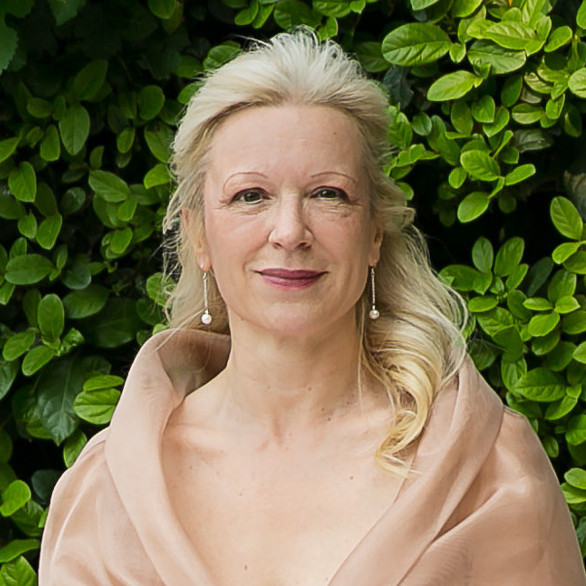The making of an international artists’ community on the island of Hydra during mid-20th Century
Every morning for the last three years as I was walking towards the tram, treading upon a a pink and white harmony of oleander petals that appeared before me like a wedding carpet, as I walked that street beneath majestic eucalyptus trees beside which grew perfectly pruned oleander bushes, I contemplated the recent history of the Greek island of Hydra.
Why did young creative people from Australia, Canada, Great Britain, the United States, France, Germany, Norway and other places descend on this small, rocky and bare island in the Saronic Gulf? How did it influence their artistic work?
(November 2019)
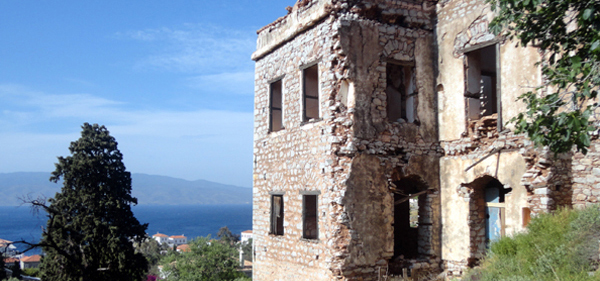
‘Υδραίος από τη μητέρα μου εγώ, γνώρισα την Ύδρα από μικρός, όταν οι γονείς μου πήγαιναν εκεί το καλοκαίρι. Αργότερα έπαυσαν να πηγαίνουν και εγώ σπούδαζα στην Ευρώπη. Όταν ξαναγυρίσα στην Ύδρα, το 1930, επειδή με τραβούσαν μακρινές αναμνήσεις, βρήκα το μεγάλο σπίτι των Γκίκα μισο ερειπωμένο.’
Νίκος Χατζηκυριάκος Γκίκας, Λόγος για την Ύδρα, συλλογικό εργο, επιμέλεια: Θανάσης Θ. Nιάρχος , εκδόσεις Καστανιώτη 2008
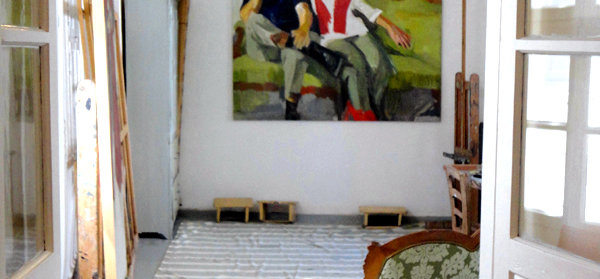
‘Τούτος ο τότε δύστυχος τόπος, είναι ένα σημερινό υπόδειγμα του ιδανικότερου τρόπου ζωής. Έχει όλα τα καλά του πολιτισμού και δεν έχει ένα και το μεγαλύτερο που θα’ταν ατύχημα του: την μηχανή και τον τροχό. Ένας από τους λόγους να έιναι επιθυμητή.’
Παναγιώτης Τέτσης, Η αισθητική της Ύδρας, στο: Λόγος για την Ύδρα, συλλογικό εργο, επιμέλεια: Θανάσης Θ. Nιάρχος , εκδόσεις Καστανιώτη 2008.

Do you remember the pink oleander
And the hot breeze of an afternoon,
A courtyard’s breathless shade and
Jasmine darkening a night with sweet?
Kevin McGrath, Eros, Poem Eros II-6, verse I, Saint Julian Press Poetry, Houston, Texas, 2016, p.28

[…], it is because we are cooped up here between the sea and the mountains, trying to be artists, or pretending to be artists, exiles in a strong context, in an island too strong for most of us to fight against.
Brenda Chamberlain, A Rope of Vines – Journal from a Greek Island, Parthian Books, Cardigan, Wales, 2009, p.129

Ich sehe Schiffe fahren – die stolze Woge braust –
Is est der Sturm der Freiheit, der in die Segel saust?
Heil euch und eurer Reise! Heil eurer schönen Last!
Heil eurem ganzen Baue vom Kiele bis zum Mast!
Ihr steuert durch die Fluthen nach einem edlen Gut,
Ihr holt des Sieges Blume, die wächst in Heldenblut.
Es donnert aus der Ferne – ist es der Gruss der Schlacht?
Is es der Wogen Brandung, die an die Felsen kracht?
Wilhelm Müller, Der Greis von Hydra, aus: Lieder der Griechen (Gedichte zum griechischen Freiheitskampf), 1821, Oxford University library.

In summer the light licks you, it swallows you with its marvellous brilliance; the sun never sets. But the light is mysterious and shadows lurk menacingly. In summer the light spills over the mountain like fire.
In winter, you are more mystic. Under the wind and the rain, more mystic still. In winter your rock breathes like skin, the houses have eyes; they contemplate the waves and shiver.
Margarita Karapanou, Hydra February 2002, introduction to the ‘Hydra through the eyes of 20th Century Greek artists’ catalogue, Historical Archives Museum of Hydra, 15 June – 31 October 2002.

The wind’s a knife
that pares all dullness
from the town
the light’s new – hoped summer
has boarded the last ferry
and gone.
Bettina Helen Massie, Sea-Change, for Imelda, verse II, Hydra 28 August 1990, in: The Ring of Moss, Fastprint Publishing, Peterborough, England, 2013, p. 38
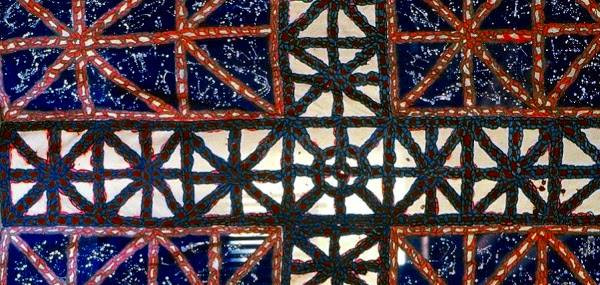
Dolphins banners and the sound of cannons.
The sea once so bitter to your soul
bore the many-coloured and glittering ships
it swayed, rolled and tossed them, all blue with white wings,
once so bitter to your soul
now full of colours in the sun.
‘Hydra’ by Georgios Seferis, verse 1
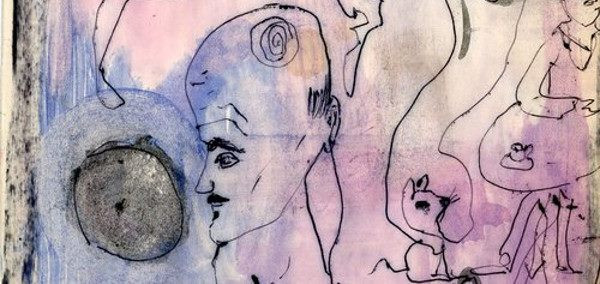
American artist, Norris Embry, (°1921 Louisville, KY -†1981 Louisville, KY) grew up in East Orange, New Jersey outside New York City and in Evanston, Illinois in the Chicago area. In 1947, Embry decided to devote his life to painting and, for the next fifteen years until the early Sixties, he embarked on a nomadic artistic career. It was the Mediterranean culture and climate that struck a chord with his heart and his artistic imagination, and in particular Greece where he returned frequently. Embry had a number of shows in Athens in the late Fifties. During an extended stay on Hydra in 1960-61, Norris Embry could be seen restlessly filling page after page of his notebooks with scribbles, fleeting images and carnivalesque, sometimes nightmarish drawings. Observing daily life around him in the taverna and the kafeneion, and inspired by the painted ceramics on the walls or on the tables, he translated the imagery with his preferred expressionist strokes into mixed media works that combine mask like faces, words and other elements into a footprint of the artist’s life.
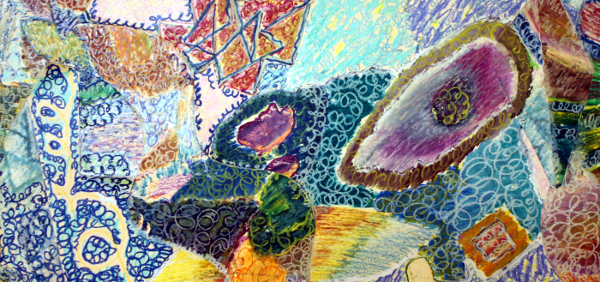
Harry Jacobus (°1927, San Francisco, California) is an American painter associated with the San Francisco Renaissance of the late Forties through Sixties. In the late Forties, he attended the California School of Fine Arts where he met fellow artist Jess Collins. Together with poet Robert Duncan, the three friends opened the King Ubu Gallery in 1952, known as a space for alternative art, music and poetry. It was there that beat poet Allen Ginsberg gave his first reading of ‘Howl’ in 1955 after the gallery had changed hands and was reopened in 1954 by poet Jack Spicer as the Six Gallery. Jess, Robert and Harry traveled together to Europe in 1955 but split their ways with Jess and Duncan remaining in Mallorca whereas Jacobus continued to Greece and to Hydra where he later on returned to stay from 1966 to 1972. It is on the island that he adapted his large size colorful and abstract paintings.
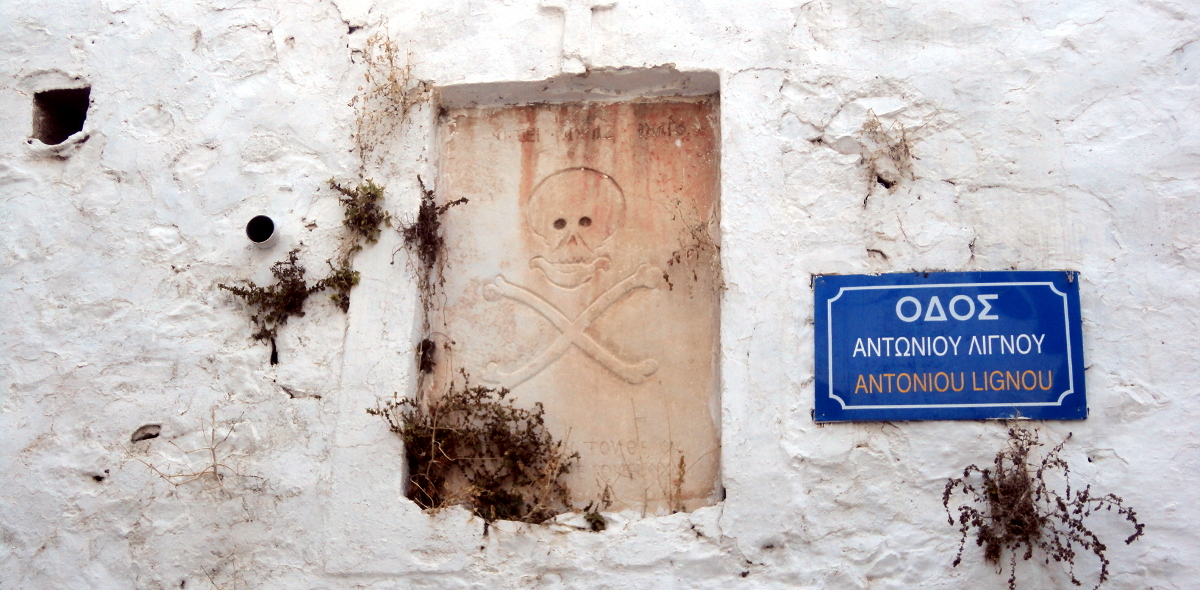
Tonight, your palace is empty and a tree swings on its base. On its stoney walls my face is alive. I pronounce your star entering the waves I come through a labyrinth dazed by your light How many more times more this flight of stairs will bring the summit? The sun today floats on the terraces of the sea A tendril bends in my iron walls a fiery breath
Poem by Rovertos Saragas
American School of Classical Studies at Athens, Gennadius Library Archives, Rovertos Saragas Papers
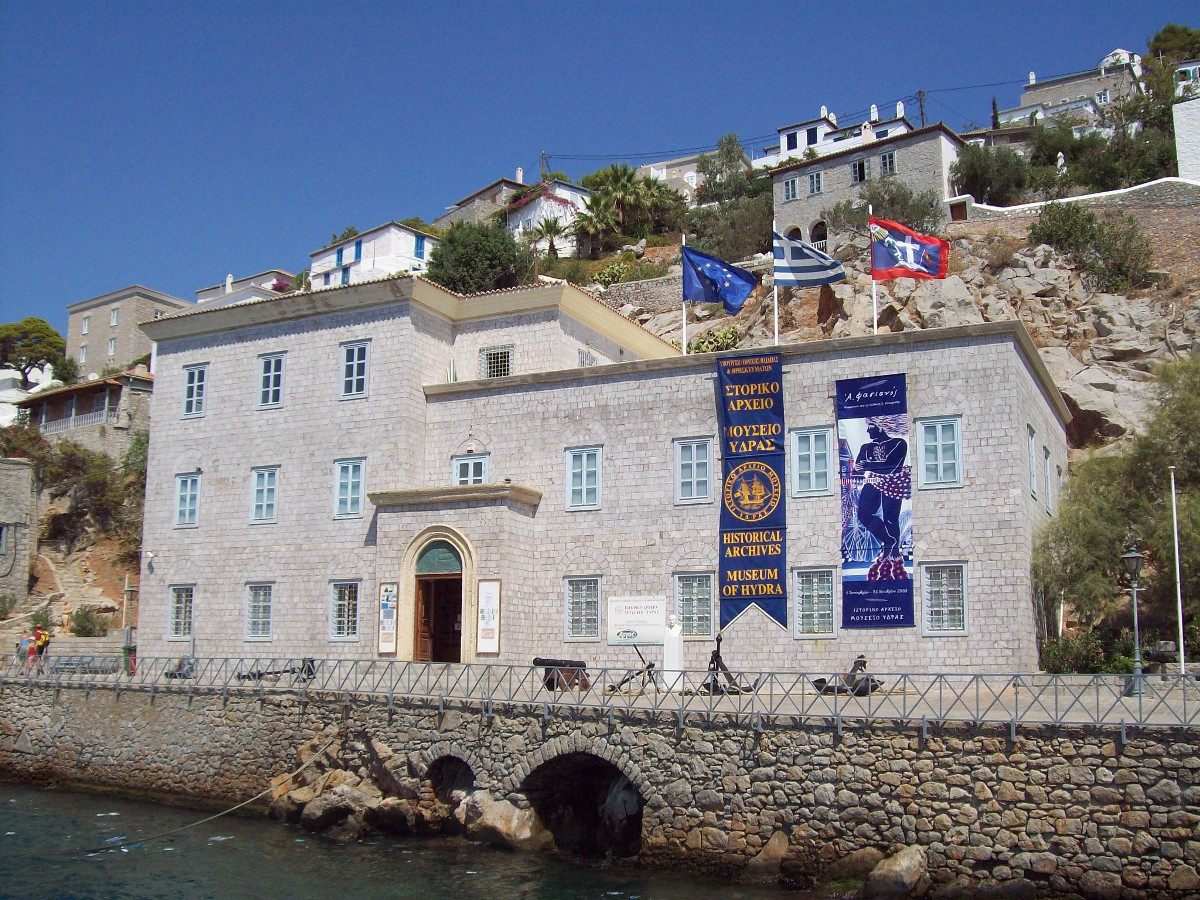
The Historic Archives and Museum of Hydra (IAMY) was founded in 1918 and moved to its current, specially constructed location in 1972. It gathers and catalogs documents and artifacts related to Hydra, particularly the history, culture, and tradition of the island. Today the archive includes some 20,000 original manuscripts, codices books, and other historic rare documents and materials. The museum displays artifacts from national and Hydriot history and culture, as well as paintings by well-known artists. Covering two floors, the museum displays, among other items, firearms, weapons, and artifacts from the Greek Revolution, Balkan Wars, and World Wars I and II, eighteenth- and nineteenth-century heirlooms, marine maps and nautical equipment, traditional dress and folk costumes, the figureheads of ships, and, perhaps somewhat ghoulishly, the embalmed heart of Admiral Andreas Miaoulis, Hydriot hero of the 1821 revolution. Lining the walls of the first floor and staircase are paintings by Greek and European artists. The File Department catalogs and preserves all documents, both public and private, relating to Hydra’s history, civilization, and traditions from the time of Ottoman rule to the present. These files comprise a significant historical source of information about island and it’s importance during the eighteenth and nineteenth centuries. A rich library contains more than five thousand old and rare volumes, some dating to the early eighteenth century.
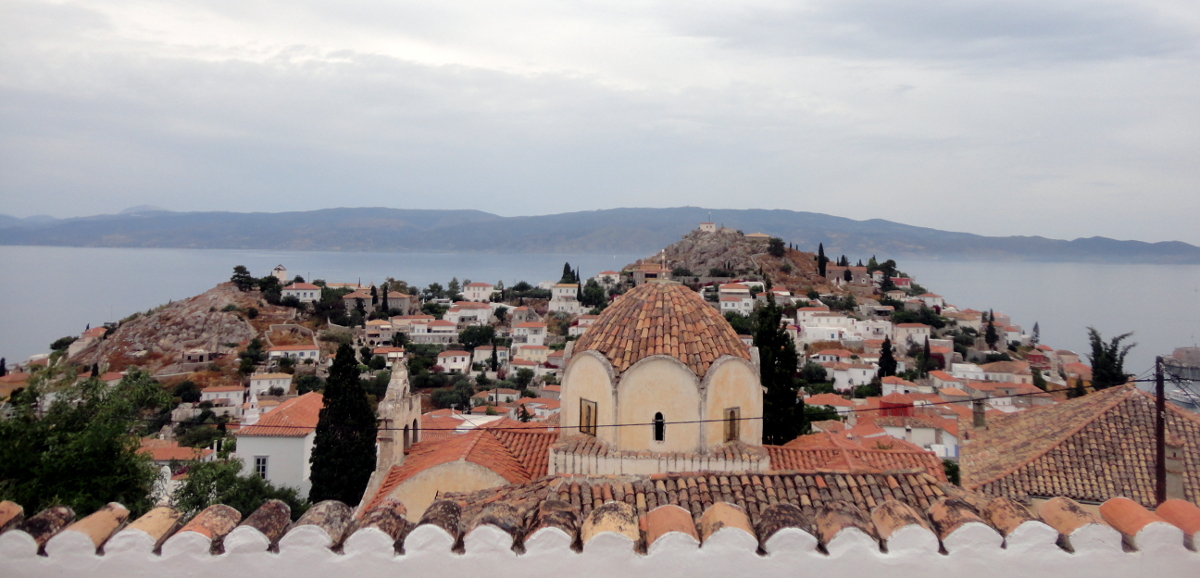
The island has acquired the nickname of the “Rock” not just because of its obvious geographical depiction, but similarities to Alcatraz in its captivation power. The Eagles song “you can check out, but you can never leave” is a simile often quoted by its inmates.
David Fagan, Rhubarbs From a Rock, 2003, iUniverse, Inc., p.3
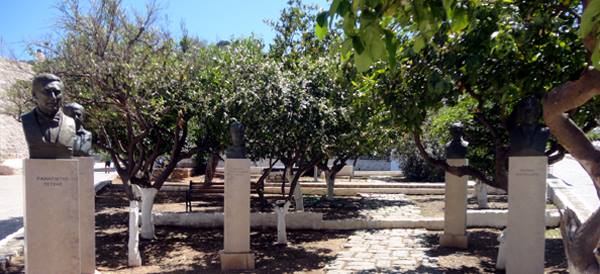
Hydra is almost a bare rock of an island and its population, made up almost exclusively of seamen, is rapidly dwindling. The town, which clusters about the harbor in the form of an amphitheatre, is immaculate. There are only two colors, blue and white, and the white is whitewashed every day, down to the cobblestones in the street. The houses are even more cubistically arranged than at Poros. Aesthetically it is perfect, the very epitome of that flawless anarchy which supersedes, because it includes and goes beyond, all the formal arrangments of the imagination. This purity, this wild and naked perfection of Hydra, is in great part due to the spirit of the men who once dominated the island.
Henry Miller, The Colossus of Maroussi, p. 55
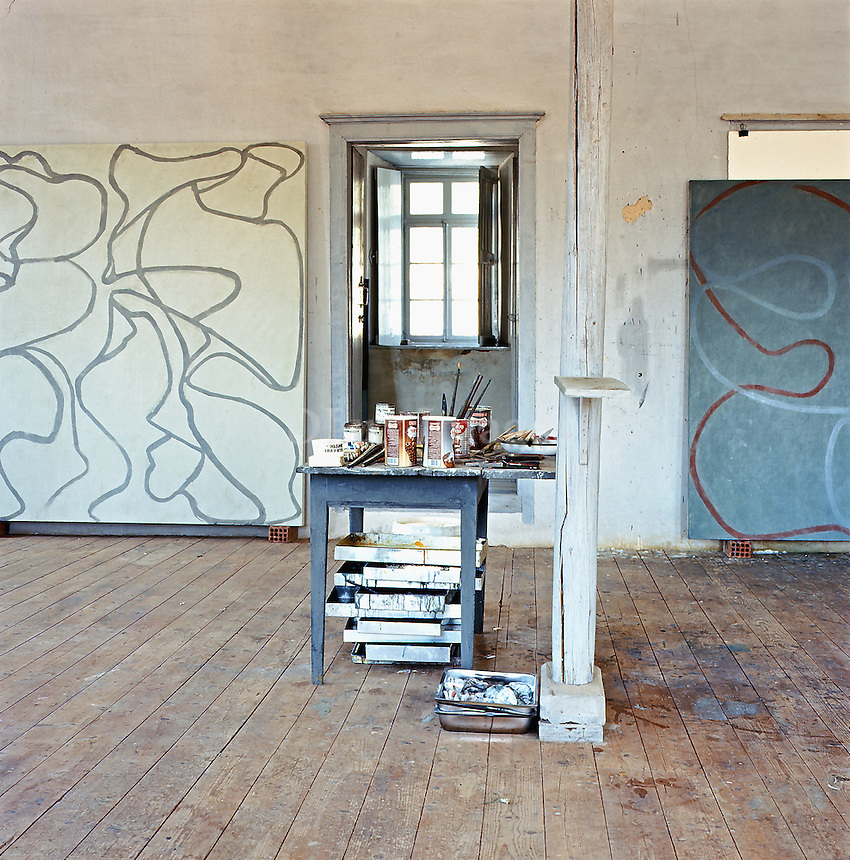
U.S. artist Brice Marden is undoubtedly the most famous visual artist associated with the island of Hydra. He and his wife Helen discovered Hydra in the early 70s and bought a house soon after. Since then, the artist couple keeps a permanent studio on the island with frequent visits to work and relax. Brice Marden’s fame is on par with poet and singer Leonard Cohen’s who passed away last year. Both artists never failed to mention the everlasting influence Hydra had on their developments and careers. As Leonard acknowledges in his last publication, The Flame:
I could not slip away
without telling you
that I died in Greece
was buried in that
place where the donkey
is tethered to the olive tree
I will always be there
Leonard Cohen, The Flame, Canongate Books, 2018
Brice Marden’ House by DLux Images

Demetri Gassoumis (°1933 Oakland, California – †2015)
Although born in America, Demetri Gassoumis’ mother had grown up on Hydra and that is where the artist returned in 1959 with his wife. Traveling between his native California and New York, where he teaches, and the island, where he keeps a studio year-round, Gassoumis is considered a fixture of Hydra and one who gladly helps new arrivals settle in. He exhibits a number of times on the island, landscapes in broad strokes and warm saturated colors, variations on blue, white, red and white. He paints outside directly from nature. After his death, his two daughter bequeathed the contents of his studio to the local Historical Archives Museum of Hydra.

Sidney Nolan (°1917, Carlton, Melbourne, AU -†1992, London)
In his homeland, artist Sidney Nolan had explored the blend of mythology and history most famously in his epic series of Ned Kelley. Stories and tales are set in the vast and unexplored landscape of Australia. It is the same blend that attracts him to Greece (1955-56) and on Hydra he starts out by exploring the similar rough landscape until he stumbles upon Homer’s tale of the Trojan War. Drawing on the memories of his brother who drowned at the end of the war on his return to home and his own desertion from the army, he substitutes the Greek warriors and heroes with the ANZACS who fought at Gallipoli, roughly the same geographic area as ancient Troy. The paintings and the many preparatory drawings from the artist’s acclaimed Gallipoli Series on which he kept working long after his departure from Greece were executed in his adopted home country of Great Britain where he got knighted in 1981.
Nolan on VIMEO
